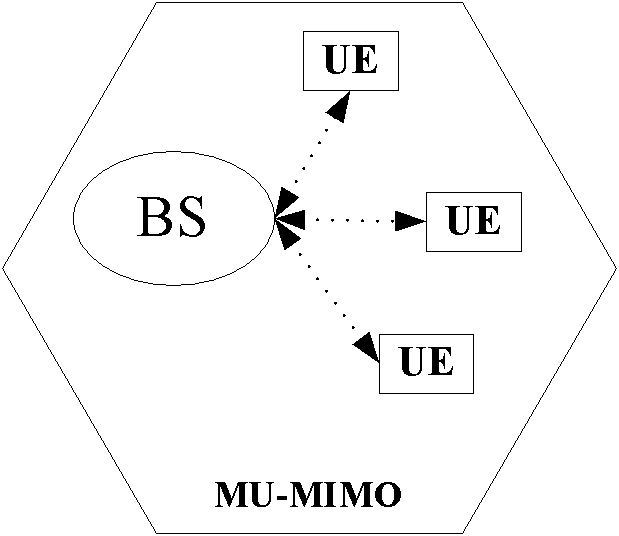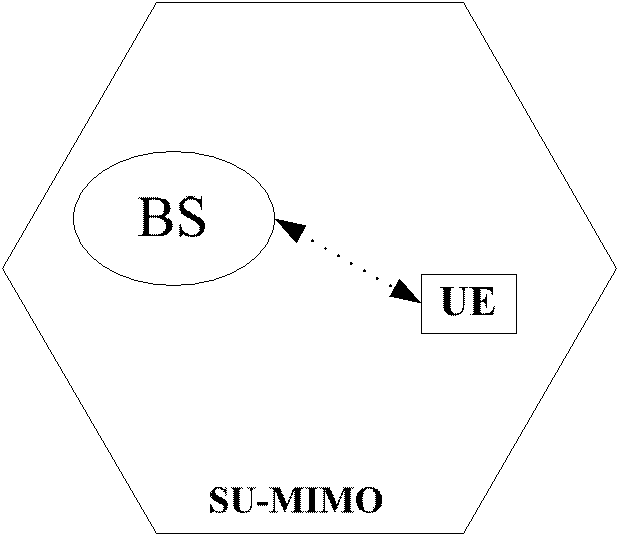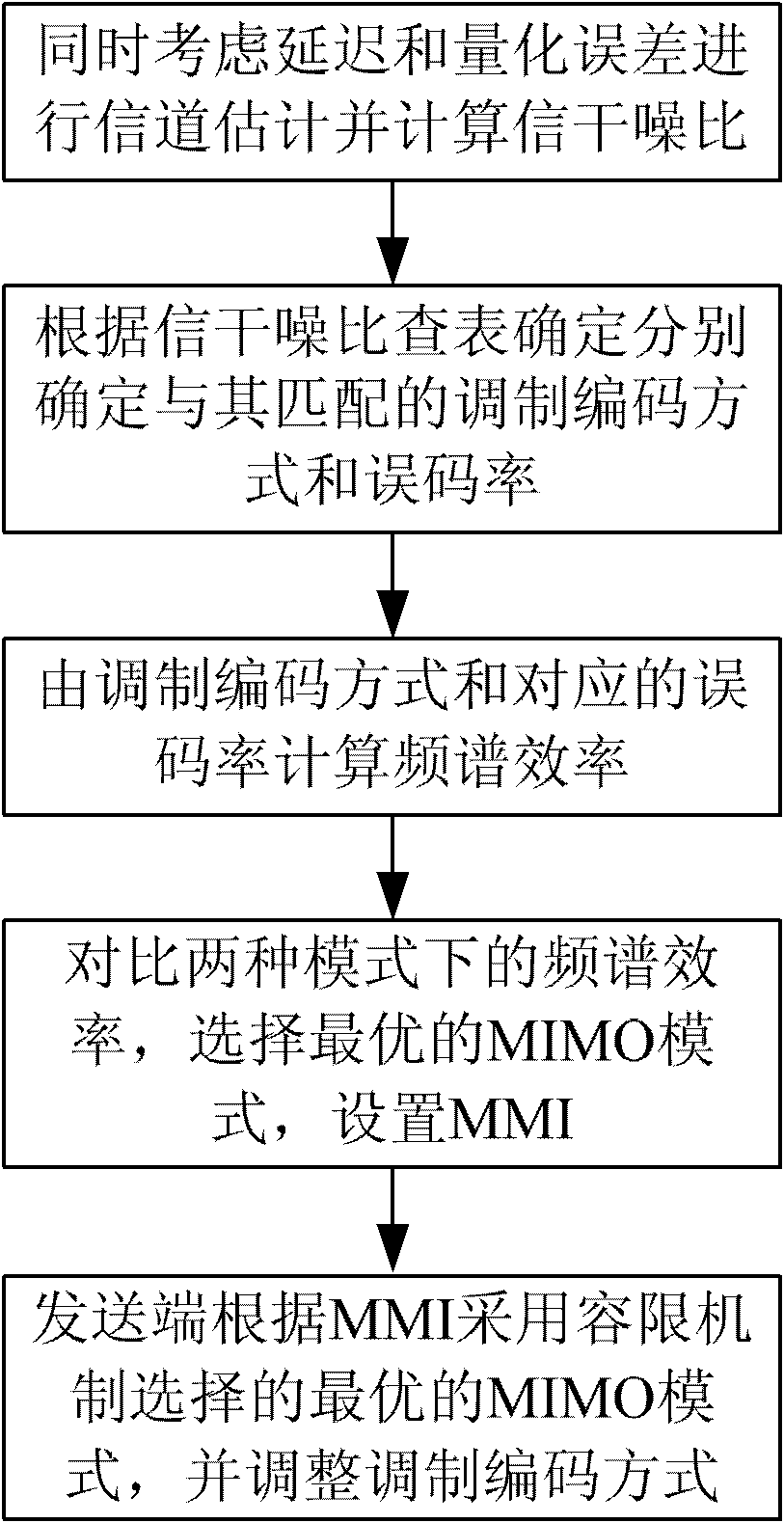Adaptive switching method of SU-MIMO mode and MU-MIMO mode and adaptive switching apparatus thereof
A technology of adaptive switching and mode switching, which is applied in the directions of space transmit diversity, baseband system components, diversity/multi-antenna systems, etc., can solve problems such as system burden, system instability, and services that cannot meet the expected requirements, and achieve Improved overall performance, precise spectral efficiency, and improved stability
- Summary
- Abstract
- Description
- Claims
- Application Information
AI Technical Summary
Problems solved by technology
Method used
Image
Examples
Embodiment 1
[0042] Embodiment 1 (for TDD system):
[0043] A method for adaptive switching of SU-MIMO and MU-MIMO modes, such as image 3 shown, including the following steps:
[0044] (1) The transmitter measures the channel information of the communication link, and calculates the average SINR in SU-MIMO mode and the SINR of a single user in MU-MIMO mode according to the channel information.
[0045] Before performing the adaptive switching process, the transmitting end and the receiving end should first agree on the MIMO mode indication (MMI) and the initial mode represented by the two modes. In this embodiment, it is agreed that MMI=0 is SU-MIMO mode, and MMI=1 is MU-MIMO mode; and the initial mode is agreed to be SU-MIMO, that is, MMI=0 is set to ensure the consistency of the mode in the communication process .
[0046] Due to the duality of the uplink and downlink, the transmitter can be used as the receiver. Therefore, when performing channel estimation, only the time it takes f...
Embodiment 2
[0079] Embodiment 2 (for the FDD system):
[0080] A method for adaptive switching of SU-MIMO and MU-MIMO modes, comprising the steps of:
[0081] (1) The receiving end measures the channel information of the communication link, and calculates the average SINR in SU-MIMO mode and the SINR of a single user in MU-MIMO mode according to the channel information.
[0082] Before performing the adaptive switching process, the transmitting end and the receiving end should first agree on the MIMO mode indication (MMI) and the initial mode represented by the two modes. In this embodiment, it is agreed that MMI=0 is SU-MIMO mode, and MMI=1 is MU-MIMO mode; and the initial mode is agreed to be SU-MIMO, that is, MMI=0 is set to ensure the consistency of the mode in the communication process .
[0083] Due to the asymmetry of the channel, it is necessary to feed back PMI, CQI Index and MMI to the transmitter. When performing channel estimation, not only the time spent on channel estimati...
PUM
 Login to View More
Login to View More Abstract
Description
Claims
Application Information
 Login to View More
Login to View More - R&D
- Intellectual Property
- Life Sciences
- Materials
- Tech Scout
- Unparalleled Data Quality
- Higher Quality Content
- 60% Fewer Hallucinations
Browse by: Latest US Patents, China's latest patents, Technical Efficacy Thesaurus, Application Domain, Technology Topic, Popular Technical Reports.
© 2025 PatSnap. All rights reserved.Legal|Privacy policy|Modern Slavery Act Transparency Statement|Sitemap|About US| Contact US: help@patsnap.com



